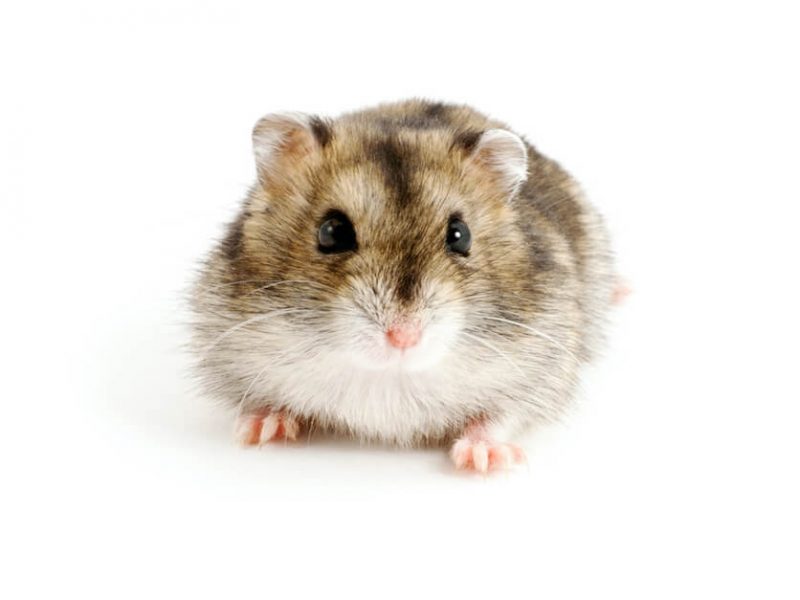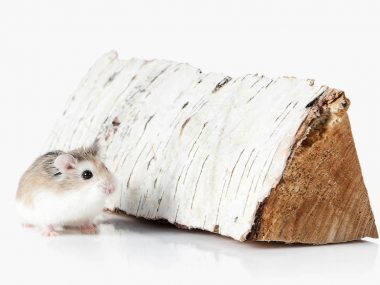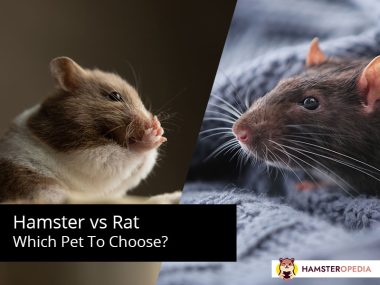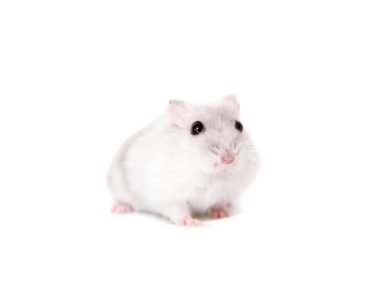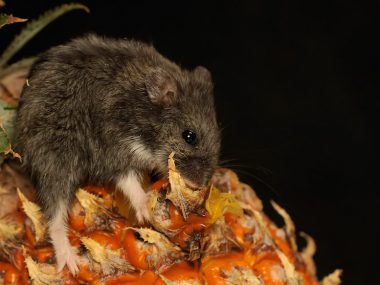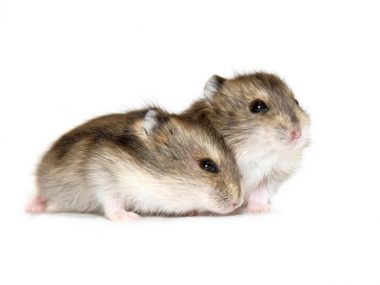Is it a hamster or a mouse? To the unknowing eye, this little guy will send someone jumping up on a chair with a loud shriek! But in reality, Chinese dwarf hamsters make up for excellent pets and don’t do any harm, compared to mice.
What Is A Chinese Dwarf Hamster?
The Chinese Dwarf hamster (Cricetulus barabensis) is a species of hamster that belongs to the rodent family. These hamsters are tiny and have mouse-like features, which is why many people mistake them for regular mice.
Table of Contents
Where Do Chinese Dwarf Hamsters Come From?
These hamsters are native to China (hence their name) and are predominantly found in the arid desert of the North China Plain and Mongolia. Their persistent population in this region causes residents to think of them as pests.
Unlike what many think, Chinese Dwarfs are an independent species and do not belong to the Phodopus genus (also dwarf hamsters.) It’s not unusual for various pet stores, hamster parents, etc., to infer that Chinese Dwarfs are the same as other dwarf hamsters.
To help clear up any confusion, we have broken down the two species.
Genus | Species | ||
Cricetulus (striped dwarf hamsters) | Cricetulus barabensis Chinese dwarf hamsters | ||
| Genus | Species | Species |
|
Phodopus | Phodopus sungorus | Phodopus roborovskii | |
| Dwarf hamsters | Djungarian hamsters (also known as Russian dwarf hamsters) | Roborovski hamster | |
Subspecies | |||
Phodopus campbelli (Campbell hamsters) | |||
| Hybrids | |||
|
Chinese Dwarfs were officially recorded and identified as a species in 1773 as Mus barabensis. The species identification name was then revised in 1867 to Cricetulus griseus. Another revision was done to change it to Cricetulus barabensis griseus. As if the many changes that occurred in the taxonomic naming of these hamsters weren’t enough, another revision changed it to Cricetulus barabensis as recognized by the Integrated Taxonomic Information System.
Chinese Dwarfs (Cricetulus barabensis) are traced back to ancient parentage millions of years ago. Two parental species (Peromyscus leucopus and Clethrionomys glareolus) brought forth the first hamster. It wasn’t until about 7 million years ago that Cricetulus barabensis broke off and became an independent species, according to an in-depth study entitled “Molecular phylogeny of the Cricetinae subfamily based on the mitochondrial cytochrome b and 12S rRNA genes and the nuclear vWF gene.”
Chinese Dwarf Hamster Characteristics and Traits
The tiny, compact-size Chinese Dwarf hamsters are typically gray with a dark stripe down their back. There’s more to these dwarfs than meets the eye, so let’s dive into the “meat and potatoes” of this species.
Chinese Dwarf Hamster At A Glance
- Coat: short-hair
- Colors: gray, grayish-brown, white
- Patterns: dominant spot
- Self or Agouti: agouti
- Eyes: black
- Size: up to 4 inches
- Lifespan: up to 3 years
- Diet: herbivore, granivore
- Sexual maturation: 4-6 weeks
- Temperament: high energy
- Level of care: moderate
Chinese Dwarf Hamster Coat Characteristics
Chinese Dwarfs have the uncanny ability to look satiny, smooth, or unfurled. All are short-haired with typically one predominant color, a distinctive dark stripe on the back, and a white underside. They are referred to as “dominant spot” in the hamster industry and “agouti” characteristics.
Eyes, Ears, and Tail Characteristics
The Chinese Dwarf has about a 1-inch tail which is often why it’s mistaken for a mouse. It has similar rat-like features to mice. The eyes are black and do not come in the reds or pinks that other hamster species do. A dark marking may be present on the ear, or the ear may be one color.
Chinese Dwarf Hamster Lifespan
When kept in ideal conditions, well cared for with ample nurturing, one of these hamsters can live up to 3 years. Because they are so small and feisty, they can easily jump out of hands, causing injury or death—proper handling and supervising your hamster when outside of the cage will ensure better longevity.
How Big Will A Chinese Dwarf Hamster Get?
Unlike the other species of dwarf (such as Roborovski or Djungarian), Chinese Dwarfs are slightly larger and grow to an average of about 4 inches long. They can weigh as much as two ounces which is about the weight of two dominoes.
Chinese Dwarf Hamster Behavior
Although most hamsters are solitary and do well on their own, it’s not unusual for hamster parents to successfully pair hamsters with no issues. A published journal article (The Chinese or Striped-Back Hamster) mentions female Chinese Dwarfs are aggressive, especially between each other. Paring should be done under close supervision.
Do Chinese Dwarf Hamsters Like To Be Held?
If a Chinese hamster has not been properly handled (tamed), it will not like being held. Reputable breeders ensure their hamsters are handled and tamed, so by the time it gets to you, it’s docile and easy to hold. However, pet stores don’t do this. When you get a hamster from a pet store, you will most likely need to handle and tame it.
How To Tame A Chinese Dwarf Hamster
Your new hamster will most likely need taming. Knowing what to do and what to expect makes the process less intimidating. The most important thing to keep in mind is until your hamster gets to know you, it may bite. New hamster parents need to have a lot of patience during this transition.
Note that “handling” and “taming” are the same thing. The taming/handling times need to coincide with your hamster’s schedule. They are active at night, so trying to tame it during the day (when it’s usually sleeping) is not best. Late evenings are the best time to handle your hamster.
Acclimation Period
- Once you bring your new hamster home, allow it to acclimate without disturbing it.
- Don’t pick it up.
- Don’t reach into the cage.
- Talk to it often. Your voice is one of the first things it comes to recognize.
- Keep the cage in a quiet, warm area away from children and pets.
- Place a small piece of your clothing (sock, scarf, hanky, etc.) in its cage so it can get used to your scent.
- After about three days, you can begin handling it.
Daily Handling
- Handling should be done on the floor in a confined area just in case your hamster jumps out of your hands.
- Wash your hands before and after handling.
- Provide treats as positive reinforcement.
- Talk to your hamster before placing your hands into the cage.
- If possible, use both hands (cupped) to scoop up your hamster. Some cage openings are too small, so cupping one hand to scoop will work. However, after getting your hamster into your hand, both hands (cupped) should be used.
- Handling should be limited to 10-15 minutes each day.
- Don’t attempt to pet your hamster until it’s tame.
You will know your hamster is tame when it easily comes to your hand. Don’t startle a waking hamster by picking it up because it will bite.
How To Take Care Of A Chinese Dwarf Hamster
Caring for your hamster begins before you bring it home and continues for its lifetime. Below are all the must-know care tips for Chinese dwarf hamster owners.
Chinese Dwarf Hamster Cages
There are many styles of cages and accessories to choose from. At the very least, you should have the following:
- Nesting box
- Bedding (cedar and pine shavings should never be used)
- Wheel
- Water bottle
- Food bowl
- Toys
Cage Placement
The cage should be kept in a warm area, 64-79 degrees (F) (17-26 C), and be protected from children and pets. It should be on a sturdy surface. Avoid placing it near windows, doors, fireplaces, vents, appliances, TVs, and stereos.
Chinese Dwarf Hamster Diet
So, what does a Chinese Dwarf hamster eat? Well, they are herbivores/granivores. They eat nuts, seeds, grains, plants, and insects. They should be fed a diet of about 70-90% seeds/plants.
Toxic Foods To Avoid:
- Alcohol
- Caffeine (chocolate, tea, coffee, etc.)
- Citrus (oranges, lemons, limes, grapefruit, etc.)
- Nightshade vegetables (potatoes, tomatoes)
- Onions
- Garlic
Do Chinese Dwarf Hamsters Smell?
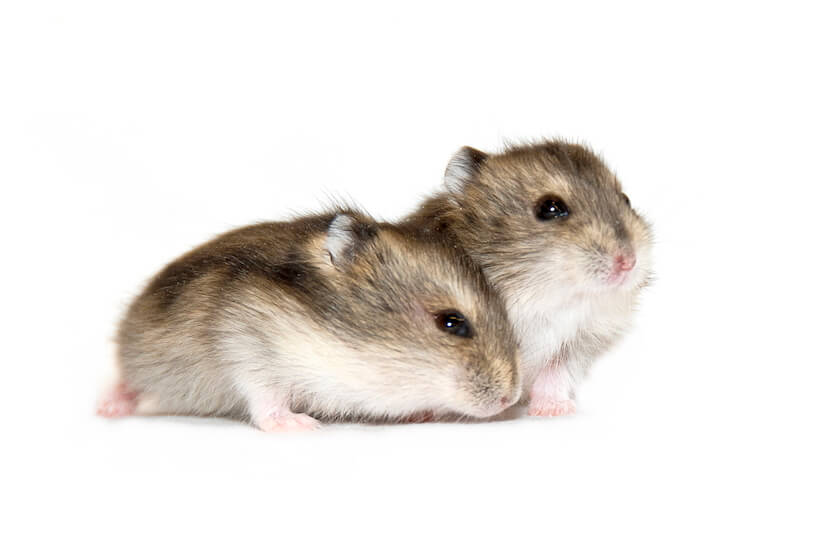
These hamsters are very territorial and known for marking. The hamster marks by scratching its flank area with its back foot and then squatting to express a secretion of liquid (which has a foul odor.) Females use marking to dominate over another female, and males do it to dominate or chase a fertile female. Marking is a precursor to fighting.
Are Chinese Hamsters Illegal In Some States?
Laws banning Chinese hamsters are listed in the “Exotic Animals Law By State.” According to this database, Hawaii, California, and Oregon are the only U.S. states restricting Chinese hamsters.
Do Dwarf Hamsters Need Baths?
Domestic pet hamsters do not require bathing. If your Chinese Dwarf becomes a bit smelly because of its scent gland, you can use a warm washcloth or sensitive baby wipe (free from fragrance) to clean it.
How Much Does Chinese Dwarf Hamster Cost?
- Chinese Dwarf hamster: $10-$20 (USD)
- Cage: $15 – $300 (USD)
- Accessories (wheel, nesting box, bedding:) $30 – $65 (USD)
- Food: $5 – $15 (USD)
Another Dwarf Worthy Of Owning
The Chinese Dwarf makes a great pet for those willing to take the time to handle and care for it. Its rat-like feature is unique. If you’re considering a dwarf, this one might be a good one to take home!
